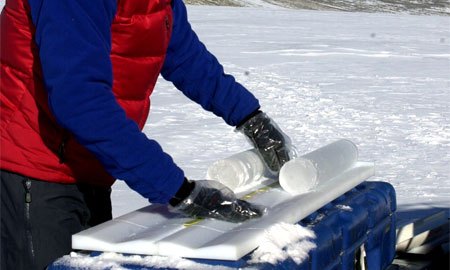Two Degrees Of Separation

Two degrees Celsius, it seems, is all that separates the United States from the rest of the world. This morning, 56 newspapers from around the world will print the same editorial calling for the world’s leaders to take decisive action towards putting together a climate change treaty at the Copenhagen climate change summit. The lone U.S. newspaper to participate is the Miami Herald.
“The science is complex but the facts are clear. The world needs to take steps to limit temperature rises to 2C, an aim that will require global emissions to peak and begin falling within the next 5-10 years.”
This week in Copenhagen, it will be all about the carbon dioxide.
The global emissions terrain is much more complicated than it appears at first glance – by Thursday, President Obama might feel that his deliberations over the Afghanistan strategy was an easier task. There are small countries against large ones, developing nations wary of developed countries, and of course, the age-old East versus West rivalry that promises to keep things interesting.
The current level of carbon dioxide in the atmosphere is 385 parts per million. This compares with a figure of some 315ppm around 1960. The irony is, in a nation that prides itself on having a “bottom line” approach to making decisions, the president faces an uphill climb here in the United States as his administration works doggedly to convince Congress and the American public that these numbers are real, and will continue to increase, unless something is done about it.
The people here in the U.S. who are fighting against any efforts to recognize that our global climate is changing seem to have conveniently forgotten that there was a time when cars our cars did not have catalytic converters. When microwave ovens and cell phones, two of our most widely used scientific breakthroughs, could not even be contemplated. But since we readily admit that our educational system produces students whose preparation has been woefully inadequate when it comes to understanding and applying scientific concepts, and has done so for years, that should come as no surprise to anyone.
Behind the pomp and circumstance, protests and protestors, the culmination of months of back room international diplomacy will begin to come to a head this month. The most important “green” item on the agenda to be discussed will be money – specifically, how much aid wealthy nations are willing to provide developing nations to enable them to meet proposed climate change guidelines.
A key area in the negotiations surrounding climate change is whether or not any of the resolutions will be binding. Every major country planning to attend, including India and China, is willing to make certain concessions, but what practically none of them are willing to do is enter into any “politically binding” agreement.
Given President Obama’s interest in reaching some sort of accord between the various factions that represented in Copenhagen this month, the question isn’t whether or not the United States is willing come to sort of agreement, but rather, what it is exactly that we will end up committing to do. It will be the U.S. president’s willingness to collaborate that ultimately redefine America’s stance on climate change.
WK2WY6Q4Q43V




